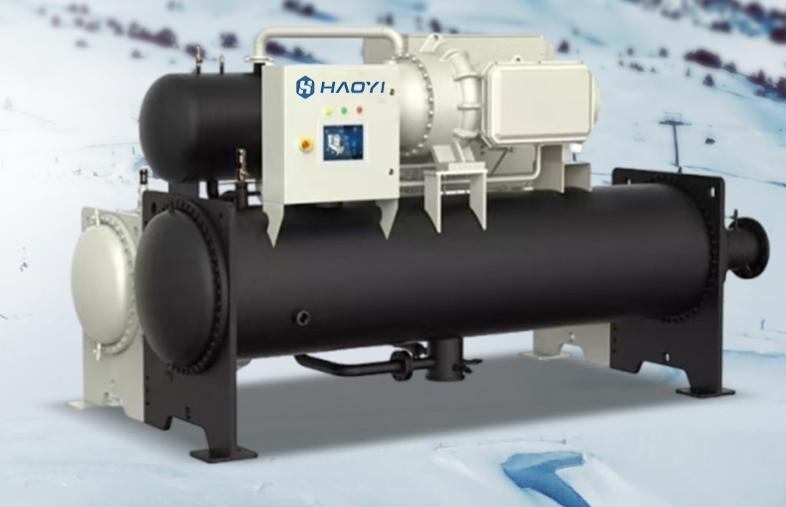It is widely applied in industries such as industry, agriculture and scientific research, for instance, in mineral processing, seed selection, cream separation from milk, isotope separation of uranium, and determination of the molecular weight of polymers in high-molecular sols. It is mainly used for separating the solid and liquid phases in colloidal solutions. When the centrifuge is in operation, it rotates at high speed. Safety should be noted during use. Today, Shanghai Zhixin Instruments will introduce to you the use and maintenance of centrifuges in the laboratory!
The use and maintenance of Ultra Low Temperature Refrigeration Unit:
Firstly, when using a centrifuge, the weight of the material should not exceed the capacity the centrifuge can bear, and the material should be evenly placed in the correct location. Only in this way can the service life of the centrifuge be shortened due to overloading. Of course, we also need to regularly oiling and maintain the centrifuge, usually every six months. It is also necessary to check whether the internal devices of the centrifuge are worn or loose. If the internal devices are severely worn, they should be replaced in a timely manner.
2. When using the centrifuge, it should be placed on a stable and solid countertop. Large-capacity low-speed centrifuges and high-speed refrigerated centrifuges should be placed on a solid ground and horizontally accordingly. The ultracentrifuge weighs several hundred kilograms and should be placed on a very solid ground with dust-proof and moisture-proof equipment to ensure that the centrifugal chamber reaches a certain vacuum degree and operates normally.
3. A safe distance of more than 30cm should be maintained around the centrifuge, and no dangerous items should be stored near the centrifuge.
4. Select the appropriate rotor, control the speed of the rotor, and the set speed must not exceed the rotational speed.
The rotational speed of the rotor needs to be reduced when the following situations occur:
(1) When the operating time and frequency of the rotor reach the specified service life;
(2) When the rotor suffers local surface damage or there is slight corrosion in the pipe hole;
(3) When using stainless steel centrifuge tubes, sleeves, thick-walled tubes or centrifuge bottles;
(4) When the average density of the sample exceeds 1.2g/cm ³; When turning the head and being exposed to high temperatures.
5. Before each use of the rotor, strictly check whether there are any foreign objects or dirt in the hole to maintain balance. When turning the head, keep it dry and clean. Do not bump or scratch it. If it accidentally falls, an X-ray should be taken of the head to check it. Only after confirming that there is no internal damage can it be used again. After each use, the rotor should be soaked and cleaned in warm water (50℃-60℃) and neutral detergent, then rinsed with distilled water or deionized water, dried with a soft cloth, dried with a hair dryer, waxed and stored in a dry place.
6. The tensile strength and elongation of various centrifuge tubes are different, and they should be selected as needed.
Centrifuge tubes can be made of many different materials, such as polyethylene, cellulose, polycarbonate, polypropylene, etc. When in use, be careful to ensure that the sample, solvent and gradient material do not corrode the centrifuge tube and cap assembly.
(2) Expired, aged, cracked or corroded centrifuge tubes should be avoided or used at a reduced speed as much as possible.
(3) Control the usage frequency of plastic centrifuge tubes and pay attention to the matching of specifications.
7. Centrifuge tubes should be placed symmetrically and filled with samples in equal amounts. Note that the centrifuge tubes should only be filled to 70% full.
Although it is covered with a lid, it may still leak out due to excessive centrifugal force. Most centrifuge tubes come with LIDS. Note that the LIDS of the centrifuge tubes should also be balanced. Do not let the rotor operate in an unbalanced state.
The centrifuge should not be run for more than 60 minutes at a time.
9. If any abnormal phenomena are found during the operation of the centrifuge, such as abnormal noise and vibration, the machine should be stopped immediately (not by turning off the POWER) for inspection. It must not be operated again until the cause is identified.
In case of machine failure or component damage during the use of the instrument, contact the technical personnel in time.
Ultra Low Temperature Refrigeration Unit https://www.szdxzl.cn/Ultra-Low-Temperature-Overlapping-Refrigerating-Unit-Details.html









Share this page with your family and friends.